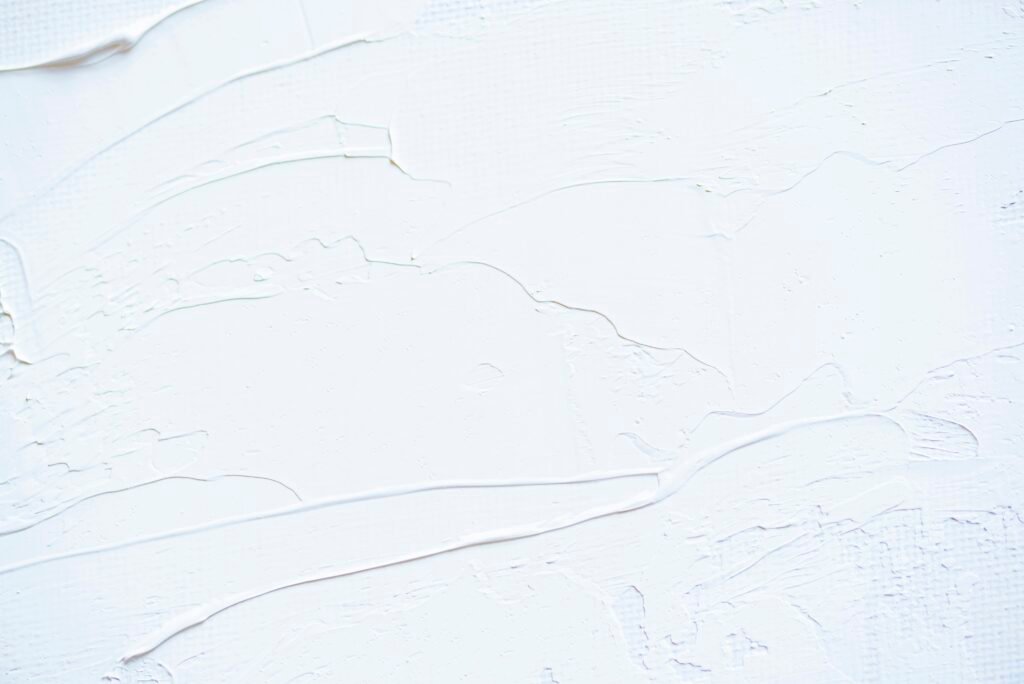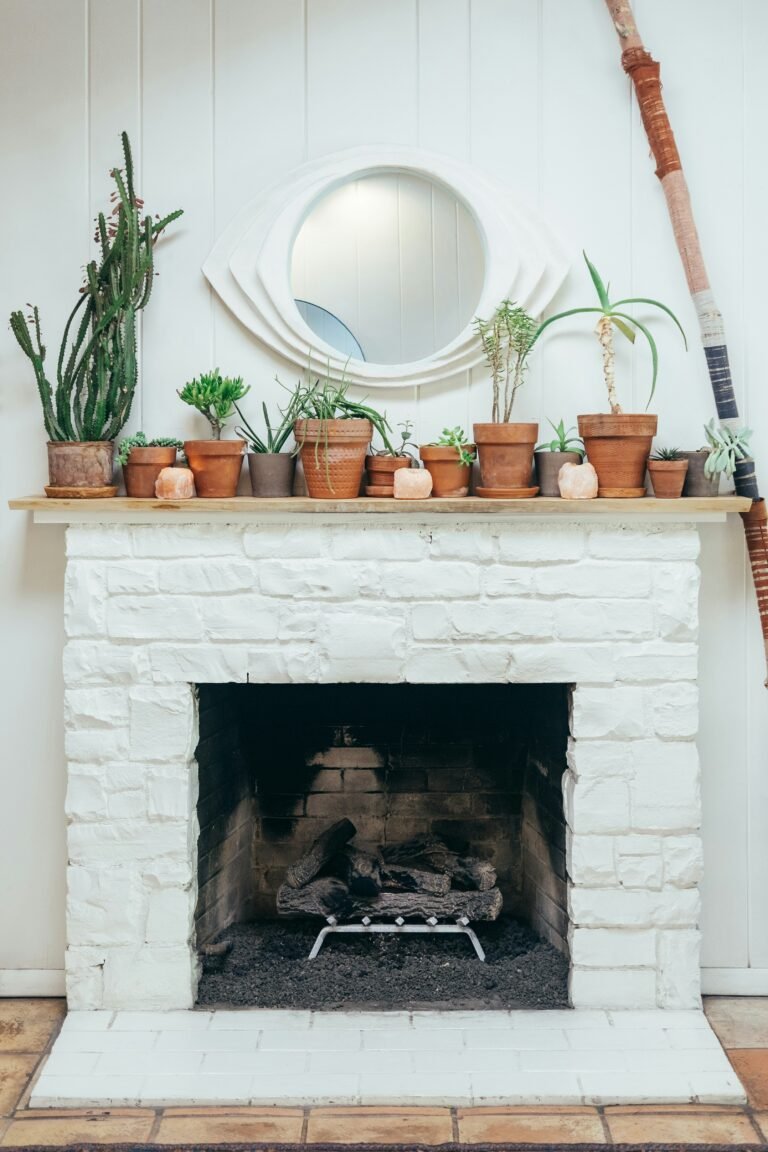Are you tired of the outdated look of your fireplace? It’s time to give it a much-needed facelift and transform it into a stunning focal point in your home. The solution? A DIY brick accent wall. This article will guide you through the process of revamping your fireplace and adding a touch of elegance and character to your living space. Say goodbye to boring and hello to a beautiful, eye-catching feature that will impress your guests and warm your heart.
Upgrade Your Fireplace With A Captivating Brick Accent Wall
1. Planning and Preparation
Researching brick accent wall designs and styles
When planning to revamp your fireplace with a stunning brick accent wall, it’s important to start by researching different brick accent wall designs and styles. Take some time to explore various design options and gather inspiration from magazines, online platforms, and home improvement websites. This research will help you visualize the final outcome and decide on a design that suits your personal style and complements the rest of your home décor.
Measuring the fireplace area and gathering necessary materials
Before you start the project, it’s crucial to accurately measure the fireplace area. Take precise measurements of the surface where the brick accent wall will be installed. This will help you determine the number of bricks and other materials needed for the project. Along with bricks, you will also require mortar, grout, safety equipment like gloves and goggles, and additional tools that we will discuss in the later sections.
Choosing the right type and color of bricks
The type and color of bricks play a significant role in determining the overall look and feel of your brick accent wall. Consider the style and aesthetic of your home when choosing the bricks. Traditional red bricks can add a rustic touch, while white bricks can create a more modern and sleek appearance. Go to a local brick supplier or home improvement store to explore different options and get a better idea of how different types and colors of bricks will suit your fireplace area.
Preparing the wall surface for installation
Before installing the bricks, it’s essential to properly prepare the wall surface. Start by removing any existing fireplace surround or debris. Clean the exposed fireplace area thoroughly, making sure it is free from dust, dirt, and grease. Inspect the wall for any cracks or damage, which should be repaired before proceeding with the installation. Finally, apply a primer or bonding agent to the wall surface, as this will ensure proper adhesion of the mortar and bricks during the installation process.
2. Brick Selection and Purchase
Exploring different types of bricks available
When it comes to selecting bricks for your accent wall, you’ll be presented with a variety of options. From traditional clay bricks to lightweight and eco-friendly alternatives like concrete and stone veneer bricks, the choices are vast. Consider the pros and cons of each type, taking into account factors such as durability, maintenance requirements, and cost. Visualize how each type of brick will look in your space and choose the one that best matches your vision for the finished project.
Considering the style and aesthetic of your home
While exploring different brick options, it’s important to consider the style and aesthetic of your home. The brick accent wall should seamlessly blend with the surrounding décor and architecture. If you have a traditional and rustic interior, opting for traditional red bricks can add warmth and charm. On the other hand, if your home has a more contemporary design, selecting sleek and neutral-colored bricks can create a modern and sophisticated look.
Checking for quality and durability
When purchasing bricks, it’s crucial to ensure their quality and durability. Inspect the bricks for cracks, chips, or any other visible defects. Choose bricks that are uniform in size and shape to ensure an even and attractive installation. Additionally, consider the weather conditions in your area and choose bricks that are suitable for your climate. High-quality bricks will not only enhance the visual appeal of your fireplace but also ensure its longevity.
Comparing prices and purchasing bricks
Now that you have narrowed down your options, it’s time to compare prices and make a purchase. Visit different brick suppliers and home improvement stores to get an idea of the cost. Keep in mind that the price of bricks can vary based on their type, color, and quality. Consider your budget and choose bricks that offer a balance between cost and quality. Don’t forget to factor in the quantity of bricks needed for your project, so you can accurately estimate the overall cost.

This image is property of images.unsplash.com.
Transform Your Fireplace Into A Focal Point With A Beautiful Brick Accent Wall
3. Tools and Materials
Creating a list of essential tools for the project
To successfully install a brick accent wall, you will need a set of essential tools. Create a checklist to ensure you have everything you need before beginning the project. Some of the tools you will likely require include a trowel, brick chisel, masonry brush, level, measuring tape, and a masonry saw. Having all the necessary tools on hand will make the installation process smoother and more efficient.
Gathering safety equipment such as gloves and goggles
Safety should always be a top priority when embarking on any DIY project. For the installation of a brick accent wall, it’s important to gather safety equipment such as gloves and goggles. Bricks and mortar can be abrasive and create fine particles that can irritate the skin and eyes. By wearing gloves and goggles, you can protect yourself from any potential injuries or discomfort during the installation process.
Collecting additional materials like mortar and grout
In addition to bricks and tools, you will need other materials to complete the project. Mortar and grout are essential for securing the bricks and giving the accent wall a finished look. Different types of mortar and grout are available, so choose one that suits your needs and preferences. Consider factors such as color, strength, and ease of application. Consult with experts at your local home improvement store to ensure you select the most suitable mortar and grout for your project.
Ensuring all necessary items are readily available
Before you begin the installation process, ensure that all necessary items are readily available. Double-check your list to make sure you have all the tools, safety equipment, bricks, mortar, and grout required. Running out of supplies in the middle of the project can be inconvenient and may result in delays. By being prepared and having everything you need within reach, you can proceed with confidence and complete the installation smoothly.
4. Removing Existing Fireplace Surround
Carefully dismantling the old fireplace surround
If your fireplace has an existing surround, you will need to remove it before installing the brick accent wall. Use caution and take your time when dismantling the old surround to avoid damage to the wall or any surrounding elements. Start by removing any screws or nails securing the surround. Gently pry away any trim or molding, being mindful not to force or damage the surrounding area. Once the surround is detached, carefully remove it from the wall.
Taking precautions to avoid damage to the wall and surrounding area
During the process of removing the old fireplace surround, it’s crucial to take precautions to avoid damage to the wall and surrounding area. Use a pry bar or similar tool to gently pry away the surround, taking care not to exert excessive force that may cause cracks or dents in the wall. If necessary, use a putty knife or painter’s tape to protect the wall from accidental scratches or chips. By being mindful and methodical, you can ensure a clean and damage-free removal process.
Disposing of debris properly
Once the old fireplace surround is removed, it’s important to dispose of the debris properly. Large pieces of wood, metal, or other materials should be carefully placed in a designated waste disposal container. Smaller debris like nails, screws, or trim pieces should be collected and disposed of in a secure container to prevent the risk of injury. Check your local regulations for waste disposal guidelines and ensure that you adhere to them for a safe and eco-friendly disposal process.
Cleaning and preparing the exposed fireplace area
After removing the old fireplace surround and disposing of the debris, it’s time to clean and prepare the exposed fireplace area for the installation of the brick accent wall. Use a broom or vacuum cleaner to remove any remaining dust or debris. Inspect the wall for any cracks, holes, or other imperfections, as these should be repaired before moving forward. Prepare the surface by applying a primer or bonding agent, ensuring that it is dry and free from any contaminants. A clean and properly prepped surface will ensure a strong bond between the bricks and the wall.

This image is property of images.unsplash.com.
5. Installing the Bricks
Creating a layout plan for the brick pattern
Before starting the actual installation of the bricks, it’s important to create a layout plan for the brick pattern. This plan will guide you on how to position and arrange the bricks to achieve your desired design. Consider factors such as brick orientation (horizontal, vertical, or diagonal), brick size, and any additional design elements such as alternating colors or patterns. Draw a detailed diagram or use a software program to visualize the layout before executing it on the wall.
Mixing mortar according to instructions
Once the layout plan is in place, it’s time to mix the mortar. Follow the instructions provided with the mortar mix to ensure the proper water-to-mortar ratio. Use a trowel or mixing paddle to combine the mortar mix and water in a clean bucket or mixing container. Mix until the mortar has a smooth and workable consistency. It’s essential to mix the mortar properly, as the consistency will impact the adhesion and strength of the bricks when applied to the wall.
Applying mortar evenly onto the wall surface
With the mortar mixed and ready, it’s time to apply it evenly onto the prepared wall surface. Use a trowel to scoop a generous amount of mortar and apply it in a thin layer onto the wall. Spread the mortar evenly, ensuring that the entire area where the brick will be placed is covered. The thickness of the mortar layer can vary depending on your design preferences and the type of bricks used. Ensure that the mortar is spread uniformly to create a strong base for the bricks.
Laying the bricks meticulously, ensuring proper alignment and spacing
Once the mortar is applied, it’s time to lay the bricks meticulously. Start from the bottom and work your way up, placing each brick in its designated spot according to your layout plan. Use a level to ensure that each brick is aligned both vertically and horizontally. Pay attention to the spacing between bricks, making sure it is consistent throughout the installation. Use a trowel or jointing tool to create uniform gaps (usually around 1/2 inch) between the bricks, as this space will be filled with grout later.
6. Grouting and Finishing Touches
Mixing grout and applying it between the brick joints
Once all the bricks are installed, it’s time to move on to grouting. Start by mixing the grout according to the manufacturer’s instructions. Use a mixing paddle and a clean container to achieve a smooth and consistent mixture. The grout color can be chosen to either match the bricks or create a contrasting look, depending on your design preferences. Begin applying the grout by scooping it onto a grout float or trowel and pressing it into the gaps between the bricks. Ensure that the grout fills the gaps completely, leaving no voids.
Smoothing the grout lines and removing excess grout
After applying the grout, it’s important to smooth the grout lines and remove excess grout from the brick surfaces. Use a grout float or a rubber grout trowel to smooth the grout lines, ensuring that they are flush with the surface of the bricks. Apply gentle pressure to avoid displacing the grout or damaging the bricks. As you work, periodically clean the excess grout from the brick surfaces using a clean, damp sponge. This will help achieve clean and well-defined grout lines and prevent the grout from hardening on the bricks.
Allowing the grout to dry and cure properly
Once the grout lines are smoothed and the excess grout is removed, it’s crucial to allow the grout to dry and cure properly. Follow the manufacturer’s instructions for the recommended drying time, as it may vary depending on the type of grout used. Keep the area well-ventilated during this process to promote proper curing. Avoid touching or placing any objects on the grout while it is drying, as this can disrupt its integrity. Patience is key during this phase, as rushing the drying process can compromise the strength and appearance of the grout.
Cleaning the brick surface and applying a sealant or finish
After the grout has dried and cured, it’s time to clean the brick surface and give it a finished look. Use a clean, damp sponge to gently wipe away any remaining grout residue from the brick surfaces. Avoid using excessive water or abrasive materials, as these can damage the mortar or bricks. Once the cleaning process is complete, consider applying a sealant or finish to protect the bricks. This step will help preserve the appearance of the brick accent wall and make it easier to clean and maintain in the long run.

This image is property of images.unsplash.com.
7. Enhancing the Accent Wall
Considering additional design elements such as a mantel or shelves
To further enhance the beauty of your brick accent wall, consider adding additional design elements such as a mantel or shelves. A well-chosen mantel can act as a focal point and provide an elegant touch to the fireplace area. Similarly, installing shelves can create space for displaying décor items, books, or personal mementos. Ensure that the additional design elements complement the style and aesthetic of your brick accent wall, creating a cohesive and visually appealing space.
Choosing complementary paint colors or wallpaper for the surrounding area
The brick accent wall will undoubtedly become the centerpiece of your fireplace area. To create a cohesive look, consider choosing complementary paint colors or wallpaper for the surrounding area. Neutral tones that complement the color of your bricks can help create a harmonious and unified aesthetic. Alternatively, if you want to add a pop of color or create a bold statement, choose a paint color or wallpaper pattern that contrasts with the bricks, allowing them to stand out even more.
Installing lighting fixtures to highlight the brick accent wall
Proper lighting can significantly enhance the visual impact of your brick accent wall. Consider installing lighting fixtures that highlight the texture and color of the bricks. Wall sconces or recessed lighting can be strategically positioned to create an atmospheric glow and draw attention to the wall. Additionally, installing dimmer switches will give you the flexibility to adjust the lighting intensity according to your preferences and the occasion.
Adding decorative elements like artwork or mirrors
To personalize your brick accent wall and make it truly unique, consider adding decorative elements such as artwork or mirrors. These items can be carefully hung or displayed on the wall to further enhance its visual appeal. Choose artworks or mirrors that complement the style and color palette of your bricks and the surrounding décor. This will create a cohesive and visually pleasing arrangement that adds personality and character to your fireplace area.
8. Maintenance and Care
Understanding proper maintenance procedures for the brick accent wall
To ensure the longevity and beauty of your brick accent wall, it’s important to understand proper maintenance procedures. Regularly inspect the wall for any signs of cracks, damage, or mortar deterioration. Address any issues promptly to prevent further damage. Additionally, regularly clean the bricks using a soft brush or vacuum cleaner to remove dirt and debris. Avoid using abrasive cleaners or harsh chemicals, as these can damage the bricks or mortar. By following these maintenance procedures, you can keep your brick accent wall looking fresh and vibrant for years to come.
Regularly inspecting and repairing any cracks or damage
As with any element of your home, it’s essential to regularly inspect your brick accent wall for any cracks or damage. Changes in temperature, settling of the building, or other factors can cause cracks to appear over time. If you notice any cracks or signs of damage, such as loose bricks or crumbling mortar, it’s crucial to address them promptly. Repair the cracks using appropriate materials and techniques, or consult a professional if necessary. Regular inspections and repairs will help maintain the structural integrity and appearance of your brick accent wall.
Cleaning the bricks to remove dirt and debris
Regular cleaning is an important part of maintaining the overall appearance of your brick accent wall. Use a soft brush or a vacuum cleaner with a brush attachment to remove dirt, dust, and debris from the bricks. Pay special attention to any crevices or grooves in the bricks, as these areas tend to accumulate more dirt over time. Avoid using harsh chemicals or abrasive cleaners, as they can damage the bricks or mortar. Instead, opt for gentle cleaning solutions specifically designed for brick surfaces.
Taking precautions to prevent water or moisture damage
Water and moisture can pose a significant threat to the integrity of your brick accent wall. Take precautions to prevent water or moisture damage by inspecting the area for any signs of water intrusion. Check the integrity of any caulking or sealant around windows, doors, or vents near the fireplace area. Ensure that the chimney is properly flashed and that there are no cracks or gaps in the mortar or bricks. By proactively addressing any water-related issues, you can protect your brick accent wall and prevent costly repairs in the future.
9. Safety Considerations
Following safety guidelines while working with tools and materials
The installation process of a brick accent wall involves working with tools and materials that can pose potential safety hazards. It is essential to prioritize safety throughout the project. Follow safety guidelines provided by the tool manufacturers, such as wearing protective gloves and goggles. Use caution when handling sharp tools like chisels or saws, and always cut away from your body. Keep the work area well-ventilated to prevent exposure to dust or fumes. By following proper safety practices, you can minimize the risk of accidents or injuries.
Using caution when handling mortar and grout
Mortar and grout can cause skin and eye irritation if not handled properly. When mixing and applying mortar or grout, use caution and wear protective gloves and goggles. Avoid direct contact with the skin, as prolonged exposure to the chemicals in these materials can cause dryness or irritation. If any material comes in contact with your skin or eyes, rinse immediately with clean water and seek medical attention if necessary. Prioritizing safety when handling mortar and grout will ensure a pleasant and accident-free installation process.
Keeping the work area well-ventilated during installation
During the installation process, it’s important to keep the work area well-ventilated. The materials used, such as mortar and grout, can emit dust or fumes that may be harmful if inhaled in large quantities. Open doors and windows to allow fresh air to circulate throughout the room. If necessary, use fans or ventilation systems to ensure proper airflow. Adequate ventilation will not only promote your comfort but also minimize the inhalation of potentially hazardous substances.
Taking necessary precautions to prevent accidents or injuries
Accidents or injuries can occur during any DIY project, including the installation of a brick accent wall. To prevent such incidents, it is important to take necessary precautions. Ensure that you have a stable and secure working platform, such as a ladder or scaffolding, to reach higher areas safely. Use caution when working at heights and always have someone present to assist if needed. Secure any loose cables or cords to prevent tripping hazards. By prioritizing safety and taking necessary precautions, you can complete the project without any unintentional injuries.
10. Hiring Professionals
Considering the option of hiring experienced contractors
While a DIY project can be exciting and rewarding, it’s important to consider the option of hiring experienced contractors for the installation of a brick accent wall. Professional contractors have the knowledge, skills, and expertise to ensure a seamless and high-quality installation. They can guide you through the entire process from start to finish, providing valuable advice and insights along the way. Additionally, hiring professionals can save you time and energy, as they have the necessary tools and specialized equipment to complete the project efficiently.
Getting quotes from various professionals
If you decide to hire professionals for your brick accent wall installation, it’s advisable to get quotes from various contractors. Contact at least three different professionals and request a detailed quote for the project. Compare the quotes, taking into consideration factors such as price, reputation, and experience. Ask for references and pictures of previous projects to assess the quality of their work. By getting multiple quotes, you can make an informed decision and choose a contractor who best meets your requirements and budget.
Evaluating the benefits and drawbacks of DIY vs. professional installation
Before making a final decision, it’s important to evaluate the benefits and drawbacks of DIY versus professional installation for your brick accent wall. DIY projects offer a sense of accomplishment and can be more cost-effective, especially if you have the necessary skills and tools. However, professional installation ensures expertise, guarantees quality workmanship, and minimizes the risk of errors or mishaps. Consider your level of experience, available time, budget, and comfort level with DIY projects when making this decision.
Making an informed decision based on budget and expertise
Ultimately, the decision to DIY or hire professionals for your brick accent wall installation should be based on your budget and expertise. If you have the necessary skills, tools, and time, and are comfortable tackling a project of this scale, DIY might be the right choice for you. However, if you prefer professional expertise, have a limited budget, or simply want to ensure a flawless installation, hiring professionals is a wise investment. Consider your priorities, budget constraints, and personal preferences to make an informed decision that will result in a stunning and durable brick accent wall.
Enhance Your Living Space With A Stunning Brick Accent Wall For Your Fireplace




